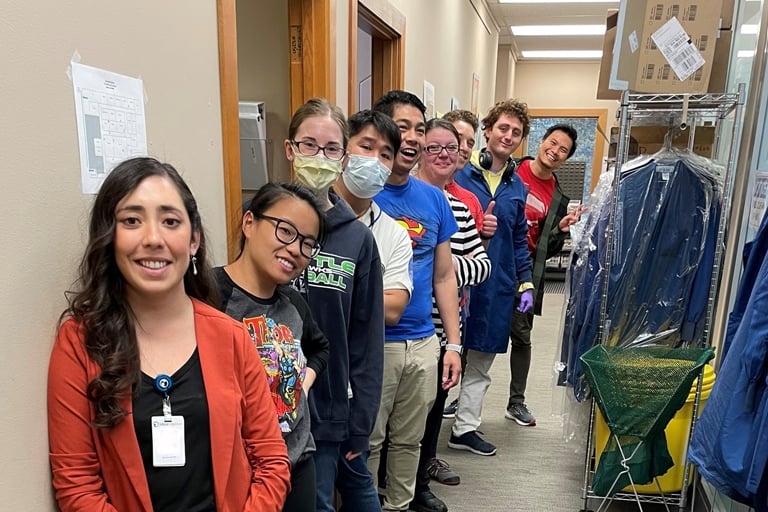Tecan uses cookies to improve our website. By continuing to browse our website, you accept our cookie policy.
Tecan uses cookies to improve our website. By continuing to browse our website, you accept our cookie policy.

Opioid addiction, alongside addiction to other substances, is a significant public health, social and economic challenge in the US. In 2017, the opioid epidemic was declared a public health emergency by the Department of Health and Human Services, with one of its aims to improve access to treatment and recovery services. Despite this, over 100,000 US lives were lost to opioid overdoses in the year to April 2021. Increasingly, outpatient centers such as Ideal Option are providing medication-assisted treatment (MAT) – combining approved medications with counseling and support therapy – to offer a ‘whole-patient’ approach to treatment of, and sustained recovery from, these addictions.
Ideal Option was established in 2012 by two emergency medicine physicians, with a mission to provide underserved populations with low-barrier access to evidence-based addiction treatment. Since then, the company has undergone rapid expansion and is now one of the largest outpatient providers of MAT for addiction to opioids, alcohol, methamphetamine and other substances in the US. Dr David Newcombe, Laboratory Director, explained: “The company started with one clinic in Kennewick, Washington. Since then, it has expanded to more than 75 clinics in 10 states, as well as laboratory services to support the clinics with toxicology and medical screening. Since 2017, we have more than tripled the number of patient samples that we process every day – we now run around 17,000 each month – and this growth has required a substantial increase in our infrastructure. For example, we originally had just one LC-MS/MS instrument, and we now have 10.”
 Automation helps the small Ideal Option team to efficiently process samples from 75 clinics across 10 states
Automation helps the small Ideal Option team to efficiently process samples from 75 clinics across 10 states
“We have two different aspects to the lab,” David added. “The biggest part is our toxicology screening, but we also have a medical lab, as some patients come to us with other health problems, such as sexually transmitted infections. In the toxicology lab, sample preparation begins with solid phase extraction – primarily from urine samples, but also from oral fluid collections. These samples are then analyzed using LC-MS. When I first started at the company in 2017, our technicians were pipetting every single sample by hand. In the morning, one technician would sit down with their 100 samples, and they would spend the next four hours doing nothing but pipetting, performing the hydrolysis, then transferring the samples to vials for the instruments. Every vial was also having to be labeled by hand, and it was just not sustainable, as well as being easily open to mistakes.”
With the throughput requirements of the lab increasing quickly, it became clear that a new solution had to be found. David continued: “We knew we had to find a way to automate the whole process, and Tecan offered an ideal solution. We now use a Freedom EVO® 100 liquid handling workstation to pipette our samples and reagents, then move on to a Resolvex® A200 positive pressure processor to carry out the extractions. The Freedom EVO has a barcode reader, so all of the tubes are scanned automatically, which has eliminated the tedious manual labeling and made samples much easier to track. We also use disposable tips on the platform, which removes the risk of cross-contamination.”
“Before, if we wanted to load 10 plates it would take 10 people. Now, two people can carry out all the extractions for the day, freeing up the others to review data and carry out other tasks. Using the Resolvex to clean the samples has also allowed us to go for a more aggressive gradient on the LC portion, so we have reduced our run time from 9.5 to 6.5 minutes. Because of the quality of the samples, it’s also easier to review the data, and we’ve found it much easier to maintain the mass spec equipment, so it’s been completely win-win for us.”
Automation has helped us tremendously during our organization’s growth phase…. I honestly couldn’t see us doing it any other way now.
“The Tecan team helped to set up the protocols in the very beginning, and then anything we’ve had to modify, we’ve done ourselves. Anytime we’ve had issues, we’ve easily been able to talk to an applications specialist or an engineer, which has been great. We’ve had the instruments in place since 2018, and we’ve found them to be very robust considering we use them heavily.”
Dave concluded: “Automation has helped us tremendously during our organization’s growth phase. We’ve been able to absorb a lot more work than if we were still doing things manually. We always run on the thinnest margins of capacity, but automation has offered a buffer so, for example, if we get a big sample surge, we’re able to work through it faster. I honestly couldn’t see us doing it any other way now.”
For Research Use Only. Not for use in clinical diagnostics.
To learn more about Ideal Option, go to www.idealoption.com
To find out more about Tecan’s solutions for solid phase extraction workflows, visit tecan.com/spe